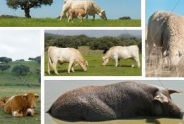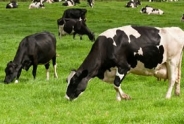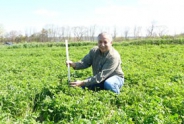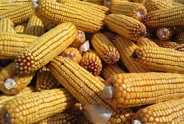Dairy
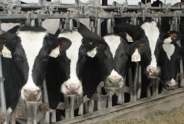 Dairy is the leading agricultural industry in New York State, and the state ranks third in the country for milk production. Our ten counties in western New York form an especially vibrant dairy region, with 943 dairy farms of many different sizes and production systems. Wyoming county is the top milk producing county in the state, producing 1.1 billion pounds annually.
Dairy is the leading agricultural industry in New York State, and the state ranks third in the country for milk production. Our ten counties in western New York form an especially vibrant dairy region, with 943 dairy farms of many different sizes and production systems. Wyoming county is the top milk producing county in the state, producing 1.1 billion pounds annually.DAIRY CATEGORIES
Relevant Event
From Dry to Fresh -- Setting Up Cows for Success
March 9, 2026 : Location 1
March 12, 2026 : Location 2
March 16, 2026 : Location 3
March 20, 2026 : Location 4
Growing Great People Workshop Interview on Finger Lakes Radio
Donette Griffith, Administrative Assistant
South Central New York Dairy & Field Crops
Coronavirus Food Assistance Program (CFAP)
On April 18, Dr. Andrew Novakovic, recently retired but formerly the Director of the Cornell Dairy and Markets Policy Program, sent an update on financial assistance provided by the federal government through the Coronavirus Food Assistance Program (CFAP), including an overview of the program and estimates of the direct payments dairy farmers might receive.
USDA's Latest Dairy Forecast
April 13, 2020 - USDA's official, consensus forecast for agricultural markets, known as the World Agricultural Supply and Demand Estimates (WASDE) report, just came out. Their analysis of dairy market (as of early April) is as follows:
2018 Feed Dealer Seminars
Tatum Langworthy, Sr. Administrative Assistant
South Central New York Dairy & Field Crops
First Cutting Updates - Week of May 22nd, 2018
Betsy Hicks, Area Dairy Specialist
South Central New York Dairy & Field Crops
An overall assessment of first cutting growth from fields we measured:
Quite a few farms across the region have started harvest of pure grass stands, as well as mixed stands. Recommendations are for 50% or less alfalfa stands to make prudent use of this cutting window to harvest for peak dairy quality across the region. There is still time for pure alfalfa stands to gain yield, given Jerry Cherney's observations. Look for our final report on Wednesday, May 30th. We will be sending out a brief survey of how you use the reports, so please feel free to give your assessment of how we are doing in regards to timing of first crop. You can also reply to Betsy with any comments you may have on the use of the report or how we can improve.
In the meanwhile, stay safe out in the fields and update the team with any conditions you encounter that would be of interest.
First Cutting Updates - Week of May 29, 2018
Betsy Hicks, Area Dairy Specialist
South Central New York Dairy & Field Crops
An overall assessment of first cutting progress from fields we measured: Most fields we measure have been harvested or are in the process of being cut. Early samples we've gotten back have shown that grass cut on recommendations looks really nice. One all grass sampled showed Adj Prot 22.0%, NDF 53.2 and NDFD 30h at 76. Early grass varieties are well headed by now, but later maturing grasses are just to head stage. If you have alfalfa fields standing alongside grass fields, it may be a good idea to harvest the grass for heifer or dry cow haylage, and focus on getting your alfalfa crop for lactating quality. Most alfalfa fields still standing are showing signs of early bud. A sample we've gotten back on a mostly alfalfa field cut on recommendations showed Adj Prot 22.6%, NDF of 48 and NDFD at 66, with the NDF and NDFD numbers a bit surprising. We'd like to see more samples of both grass and alfalfa and mixed if you'd like to share with Janice or Betsy.
First Cutting Updates - Week of May 15th, 2018
Betsy Hicks, Area Dairy Specialist
South Central New York Dairy & Field Crops
An overall assessment of first cutting growth from fields we measured:
Now is the time to cut Pure Grass fields across the region for peak dairy quality forage. Some higher elevations are just at that point, some fields in lower elevations and those in the southern portion of the region are just past that point. Weather forecast looks like rain over the weekend. If you have pure grass stands to harvest for your lactating cows, now is the time to park the corn planter and focus on quality hay crop. For 50/50 mixed stands, recommendations are looking like middle of next week for peak quality. Pure alfalfa stands we still have time - predictions are out to the end of the month at this point for peak quality. Please feel free to share samples you have analyzed with the team to let us know how predictions match up with reality.
First Cutting Updates - Week of May 8th, 2018
Betsy Hicks, Area Dairy Specialist
South Central New York Dairy & Field Crops
An overall assessment of first cutting growth from fields we measured:
Many stands of alfalfa are too short to give adequate predictions for pure grass stand harvest - especially those at higher elevations. That being said, many lower elevation fields have alfalfa measuring 11-12", and predictions for harvest of nearby pure grass fields look like this weekend for peak quality. 50/50 mixed grass/alfalfa stands predictions are saying harvest in ~2 weeks, but time and weather will give us a better prediction next week for mixed stands. Weather looks like rain on Saturday, but a decent stretch of weather to start next week out. Look for our next report on Wednesday, May 16th. In the meanwhile, stay safe out in the fields and update the team with any conditions you encounter that would be of interest.
Cow Comfort Proceedings
Milking time at family dairy farms
A. Fay Benson, Small Dairy Extension Educator
South Central New York Dairy & Field Crops
Watch these videos below for a peek inside the milking routine at local family dairy farms.
Custom Machinery Rates
Nancy Glazier, Small Farms & Livestock Specialist
Northwest New York Dairy, Livestock & Field Crops
Trying to figure out how much to pay or charge for custom machinery operations? Check out the 2016 custom rate summaries from Pennsylvania.
NYSERDA Agriculture Energy Audit Program - Fact Sheet
Janice Degni, Team Leader, Field Crop Specialist
South Central New York Dairy & Field Crops
NYSERDA offers energy audits to help eligible farms and on-farm producers identify ways to save energy and money on utility bills. Reports include recommendations for energy efficiency measures.
Upcoming Events
Cornell Cooperative Extension for a Business Development and Marketing Zoom series
January 20, 2026 : Cornell Cooperative Extension for a Business Development and Marketing Zoom series
2026 Winter Crop Meeting - Auburn
January 22, 2026
Auburn, NY
2026 Winter Crop Meeting - Dryden Location
January 23, 2026
Dryden, NY
Announcements
Farm Participants Needed for Bale Grazing Grant!
Information on the Project:- Approximately 10 acres total needed to bale graze two different bale densities
- "Core" farms will graze two winters, "Demo" farms will graze one winter.
- Payments for both "Core" farms and "Demo" farms
- Baseline soil sampling by bale grazing team
- Forage measurements in early season by bale grazing team
- Late season clipping if residual not trampled down by farm
Cornell Cow Convos - New Podcast
On-going podcast, New episodes released on the last Thursday of the month.Guest speakers, CCE Dairy Specialists.
Housed on Soundcloud Channel is CCE Dairy Educators
- Preventative healthcare for cows
- The trend of beef on dairy
- What to look forward to in the new year for dairy
- Socially grouping or pair-housing calves
2018 Drug Residue Prevention Manual
For more than 30 years, the U.S. dairy industry has focused educational efforts on the judicious use of antibiotics through the annual publication of a Best Practices Manual. The 2018 edition of the National Dairy FARM Program: Farmers Assuring Responsible Management? Milk and Dairy Beef Drug Residue Prevention Manual is the primary educational tool for dairy farm managers throughout the country on the judicious and responsible use of antibiotics, including avoidance of drug residues in milk and meat.The manual is a quick resource to review those antibiotics approved for dairy animals and can also be used as an educational tool and resource for farm managers as they develop on-farm best management practices necessary to avoid milk and meat residues. Visit the Manual and Form Library to download copies of this important tool!
Follow us on Facebook
The team updates our facebook page frequently - follow us to be updated on our events, see some fun videos and get local area updates!facebook.com/SCNYDairyandFieldCropsTeam
NYSERDA Agriculture Energy Audit Program
NYSERDA offers energy audits to help eligible farms and on-farm producers identify ways to save energy and money on utility bills. Reports include recommendations for energy efficiency measures.For more information and the NYSERDA Agriculture Energy Audit Program Application click here

